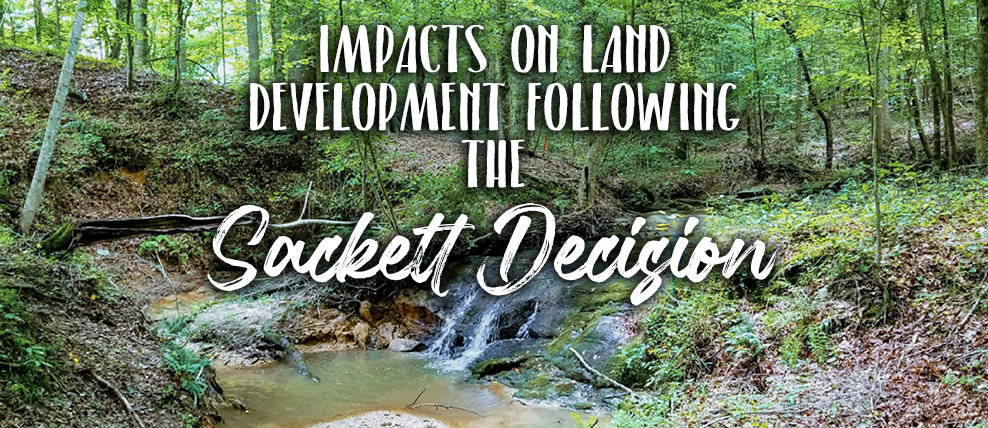
In the wake of the recent U.S. Supreme Court ruling on the Sackett v. EPA case, property developers and homebuilders have been eagerly awaiting updated guidelines on the revised Waters of the United States (WOTUS) rule from the Environmental Protection Agency (EPA) and the U.S. Army Corps of Engineers (USACE).
Before undertaking any activities that would affect areas defined as WOTUS, such as crossing, piping, or filling in these water bodies, land developers are required to secure a permit from the USACE. The permitting process is both costly and time-consuming. According to data from the National Association of Home Builders (NAHB), the average cost to obtain and mitigate a WOTUS feature is around $270,000, and it typically takes about 788 days to navigate the regulatory requirements.
What’s WOTUS?
The Clean Water Act, passed by Congress in the 1970s, gave the EPA and USACE jurisdiction to regulate “navigable” waters, or WOTUS. The statute does not specifically define WOTUS, but instead grants EPA and the USACE the responsibility to develop this definition through rulemaking. Any waters not regulated by the EPA and the USACE are by default available for development subject to state and local government regulations.
Given that the WOTUS rule delineates which water bodies fall under federal oversight, it is a hotly debated and often-amendment aspect of U.S. environmental policy. Since 2015, the EPA has altered the WOTUS definition on five occasions, contributing to a climate of regulatory ambiguity.
Supreme Court
The Supreme Court has examined the contentious term WOTUS multiple times with differing opinions. As a result, the phrase “significant nexus”, used in the Court’s 2006 ruling in Rapanos v. United States, became the de facto standard by which determinations were made. For the decade to follow, the USACE’s position was that a water or wetland must possess a “significant nexus” to waters that are or were navigable. Owing to varying interpretations of “significant nexus” among different USACE field offices—each having their own views on what qualifies a stream or wetland as jurisdictional—the Trump administration replaced it with a rule that more narrowly defined navigable waterways and their primary feeder systems. Earlier this year, the Biden Administration reverted to the pre-Trump era of “significant nexus.”
On May 23, 2023, the U.S. Supreme Court released its unanimous decision in Sackett v. EPA to eliminate the “significant nexus test.” Justices were split on what the replacement test should be, and the majority’s 5-4 ruling stated that the term WOTUS should apply to relatively permanent water bodies. Importantly, the Court did not clarify what it means for a wetland or water body to have a relatively permanent surface water connection.
Post Sackett
In response to Sackett, the EPA issued a revised WOTUS rule in August 2023. The rule fails to provide a definition of a “relatively permanent” water body, allowing for federal agencies to continue with a case-by-case analysis of each water body to determine if it is relatively permanent. It remains to be seen whether different interpretations of “relatively permanent” will essentially serve as a stand-in for “significant nexus,” resulting in little to no practical change in the WOTUS rule.
Adding to the complexity, various federal district courts had previously put a temporary hold on the WOTUS rule introduced by the Biden administration in January 2023. This injunction now bars the agencies from enforcing the WOTUS modifications announced on August 29th. As a result, the updated definition of WOTUS will be in effect only in 23 states. Meanwhile, the remaining 27 states, Alabama among them, will continue to follow the regulations that were in place before 2015, along with the guidance from the Sackett decision, until further updates.
The WOTUS rule has far reaching implications for many stakeholders, including landowners, developers, homebuilders, and environmentalists. Until a clear definition of a relatively permanent water body is determined, legal and legislative debates will likely ensue as interested parties seek to challenge or defend the new rule.

